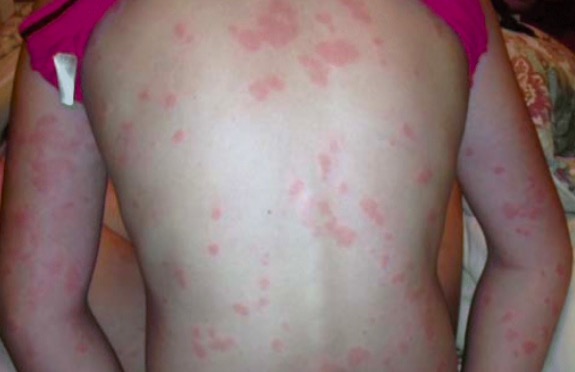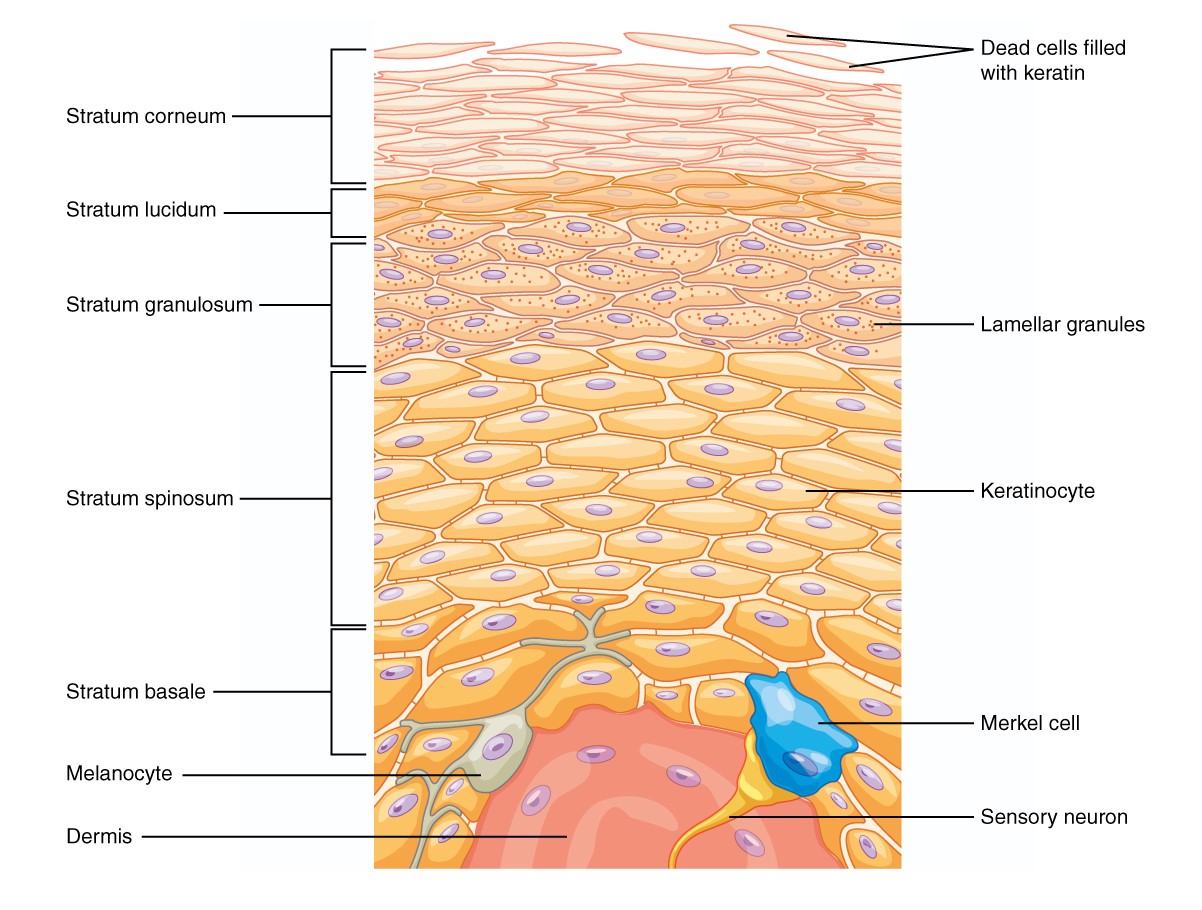Playlist
Show Playlist
Hide Playlist
Hives (Urticaria)
-
Slides Dermatology Inflammatory Skin Diseases.pdf
-
Download Lecture Overview
00:03 Let's talk about Urticaria (Hives). 00:06 So what urticaria (hives), what does this mean to you? The IgE-mediated. 00:10 As soon as you hear IgE-mediated what does that mean to you? It means that now you've been exposed to a particular antigen, in which you have now elicited a Type 1 hypersensitivity. 00:20 Isotype switching, IgE then lands upon your IgE receptors of the mast cell. 00:25 And what did you release? Ah, histamine. Histamine, histamine. 00:30 Histamine has what can effect on your blood vessels? Vasodilation. Good. 00:36 Welcome to Hives. 00:38 Now once you have vasodilation taking place with the histamine being released by the mast cell You have an area that appears what? Maybe a little edematous. 00:50 Erythematous caused by food, medication, exercise, temperature, vibration, stress. 00:56 Those things that you can expect in which hives are going to develop. 01:00 And two to three episodes per week, for six weeks is a chronic urticaria. 01:06 Be familiar to define, or how to define chronic urticaria, which is two to three episodes per week for six weeks. 01:14 That is extremely cumbersome. 01:18 Morphology: Rapid development of edematous enie Edematous, why? Histamine, vasodilation, edema. 01:27 Erythematous, wheal formation. 01:30 There are three terms here that you want to keep in mind: urticaria, hives, and wheal formation. 01:35 To you, it's a type 1 hypersensitivity, with vasodilation, edema, and erythema. 01:44 These lesions evolve and dissipate rapidly within 24 hours. 01:49 And there's every possibility that if you were to take a glass slide, for example, and apply pressure, apply pressure on this hive or wheal formation with vasodilation, press upon that wheal please W-H-E-A-L, what's going to happen? Blanching. 02:07 Because when you press upon that wheal, the fluid edema is going to then disperse. 02:14 So that erythema that you found upon what's known as a diascopic type of examination is then going to give you your blanch type of appearance. 02:28 Diagnosis: Rapidly evolution, clinically distinctive, and biopsy rarely performed. 02:35 A history is going to tell you what's going to happen. 02:37 Take a look at the image here, high formation on the thigh and the leg of this individual. 03:08 Management: You need to identify what's actually causing the type I hypersensitivity. 03:13 Antihistamines obviously sedating, such as maybe diphenhydramine. 03:18 Moderately sedating will be cetirizine and non-sedating, if at all required based on the patient's habits and behavior, Maybe you're thinking about loratadine. 03:27 but anti-histamine, you are going after the histamine, so that you can take care of the hives.
About the Lecture
The lecture Hives (Urticaria) by Carlo Raj, MD is from the course Inflammatory Skin Diseases.
Included Quiz Questions
A 35-year-old patient presents with a recurrent rash of red, raised, itchy papules that occur with exposure to weeds. What is the pathogenesis of the lesions?
- Histamine release and vasodilation
- IgM-induced vasodilation
- IgE-mediated vasconstriction
- Type II hypersensitivity reaction
- T-cell-mediated response
What is the most appropriate initial treatment of urticaria involving the arms and legs?
- Antihistamines
- Topical steroids
- Pharmacotherapy not recommended without a biopsy
- Methotrexate
- Oral steroids
Customer reviews
5,0 of 5 stars
| 5 Stars |
|
5 |
| 4 Stars |
|
0 |
| 3 Stars |
|
0 |
| 2 Stars |
|
0 |
| 1 Star |
|
0 |





